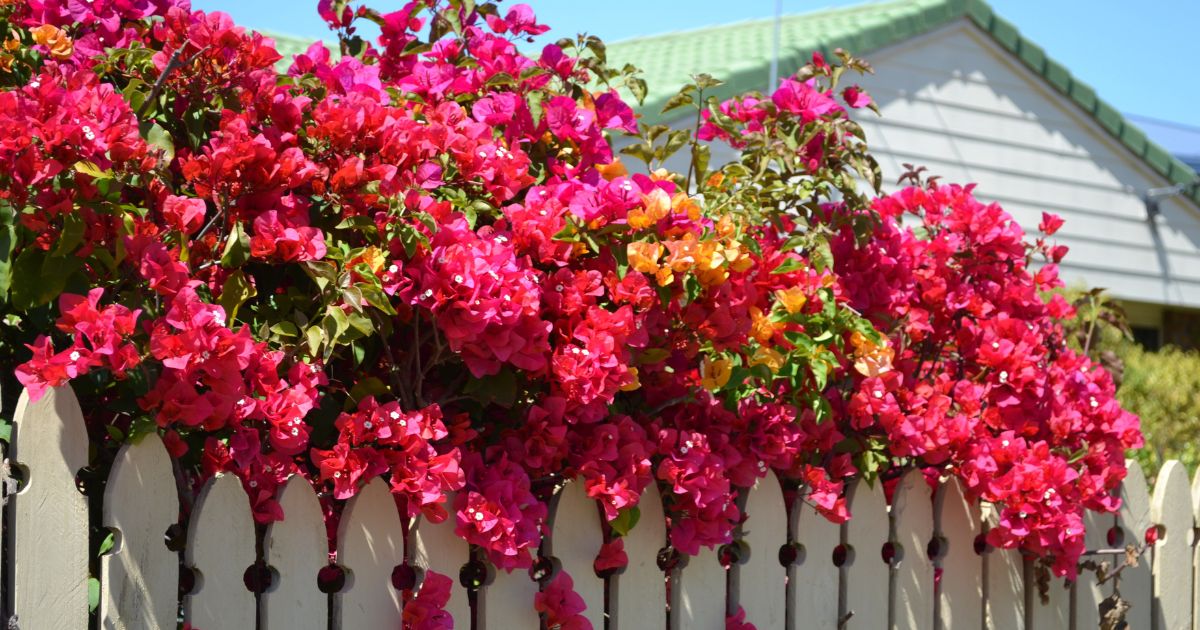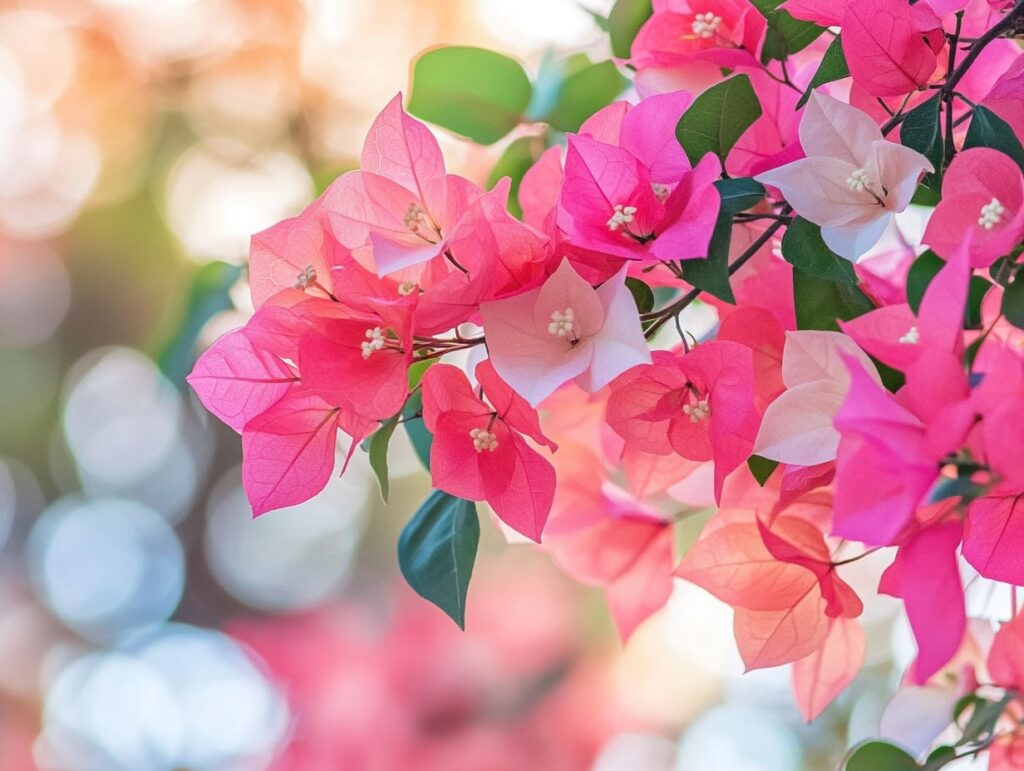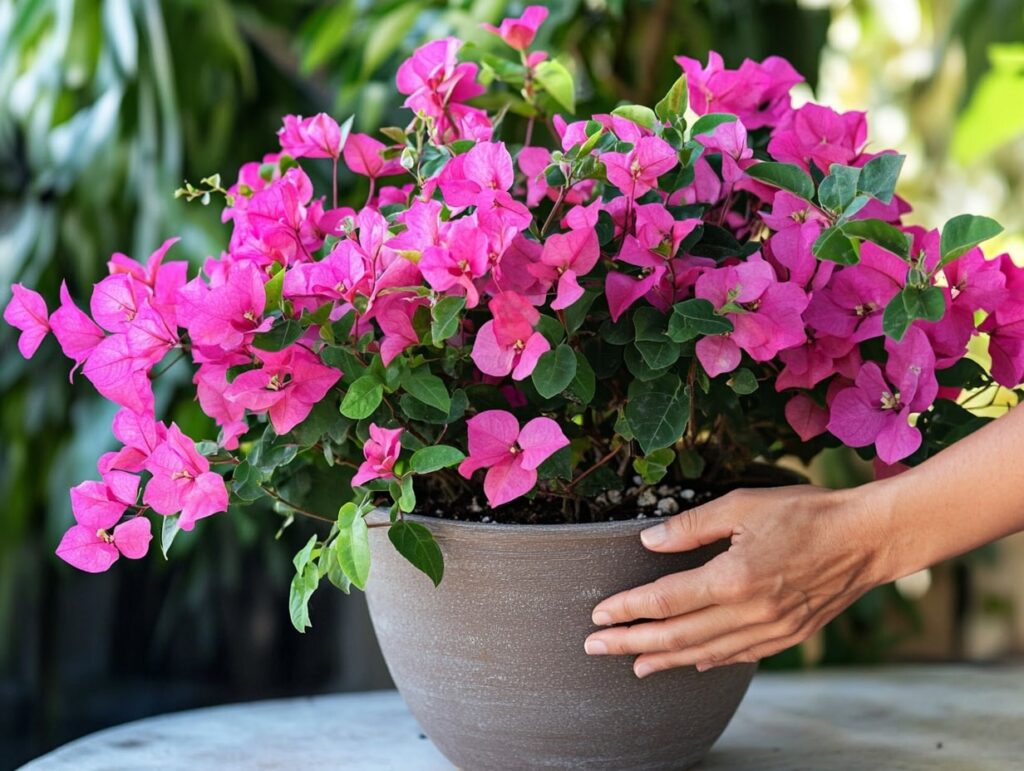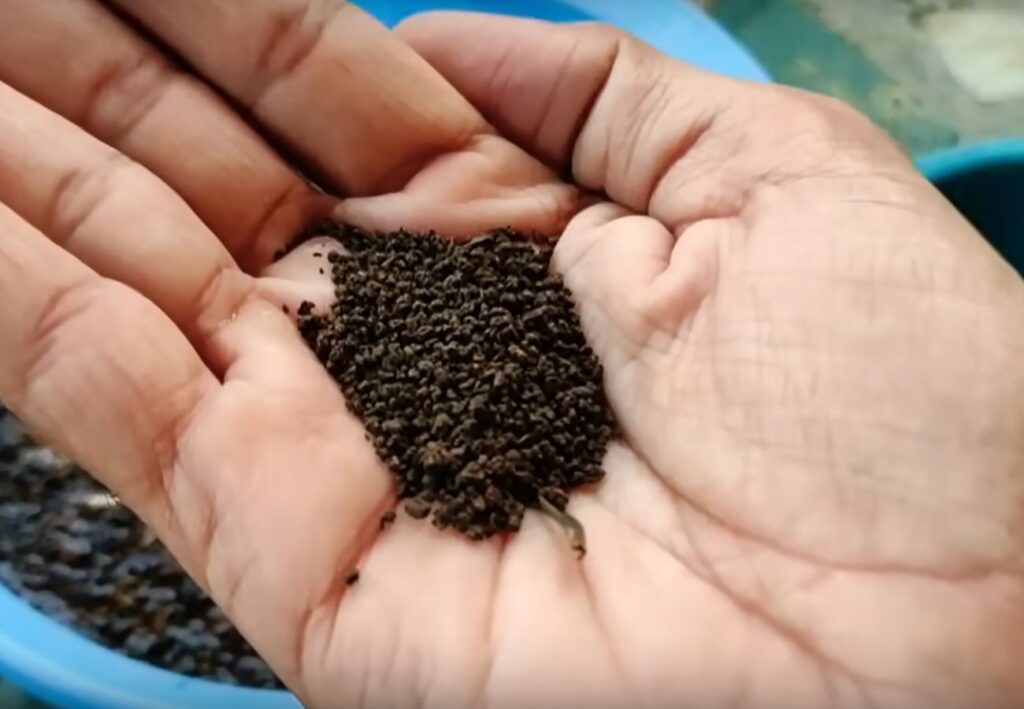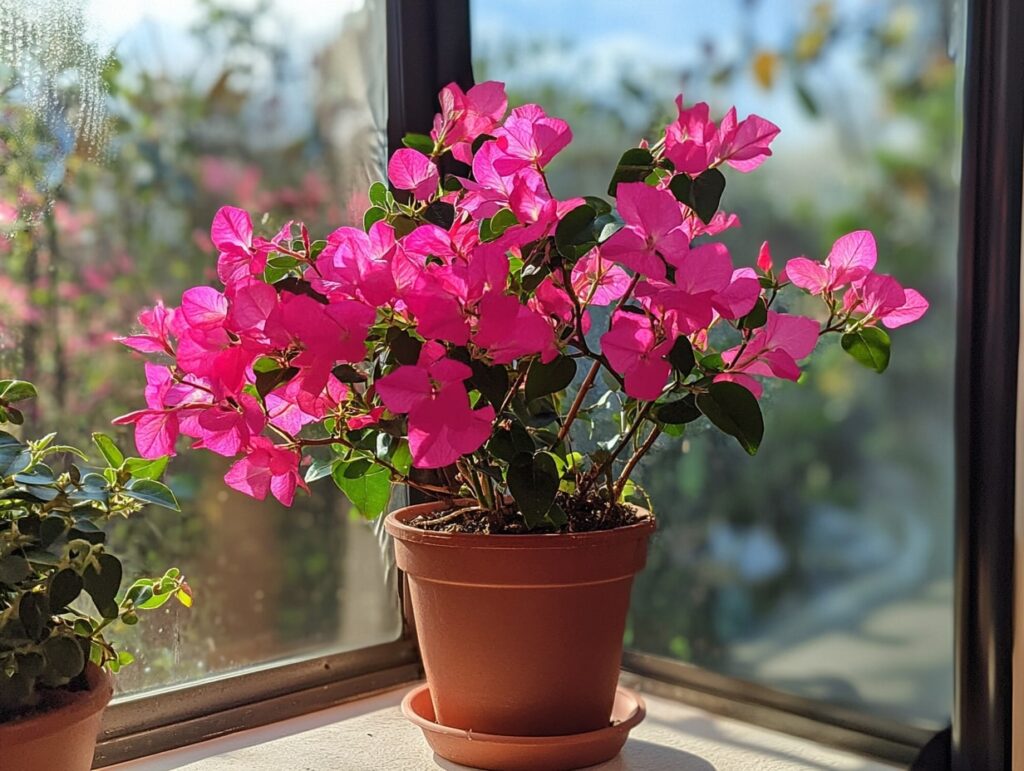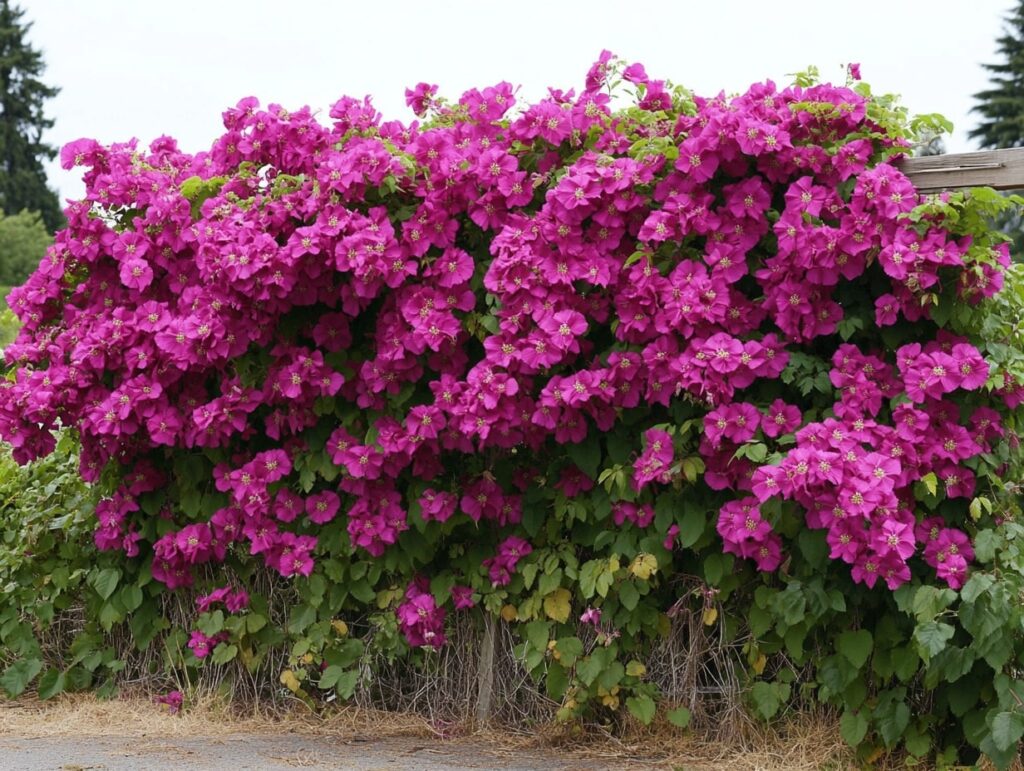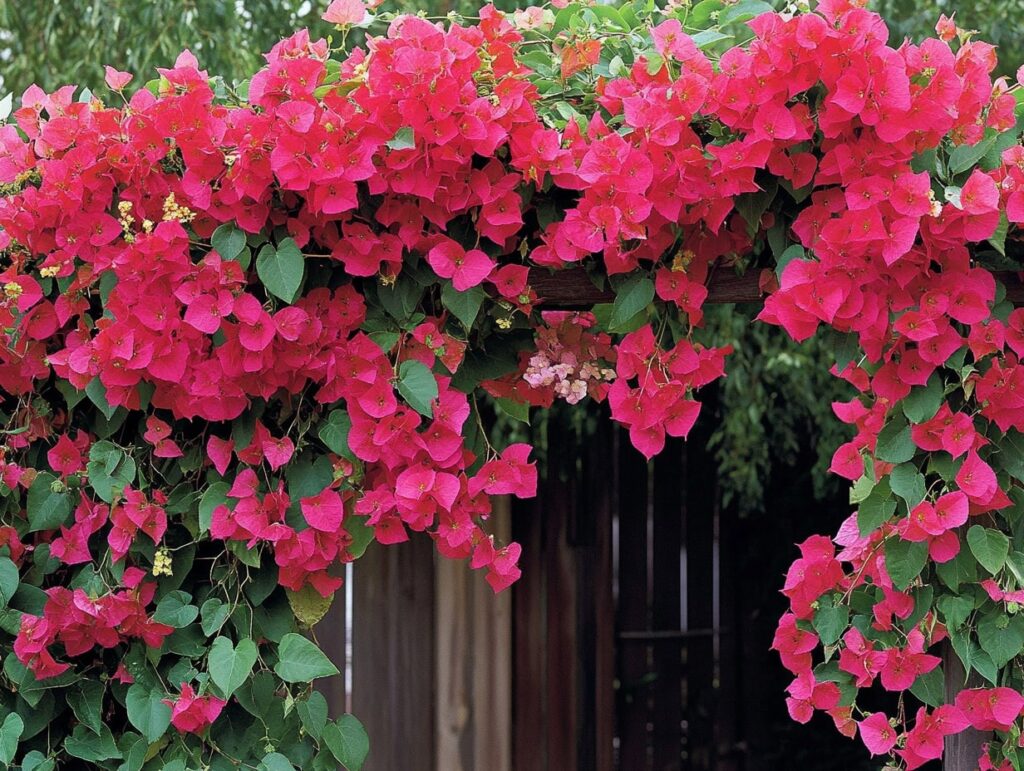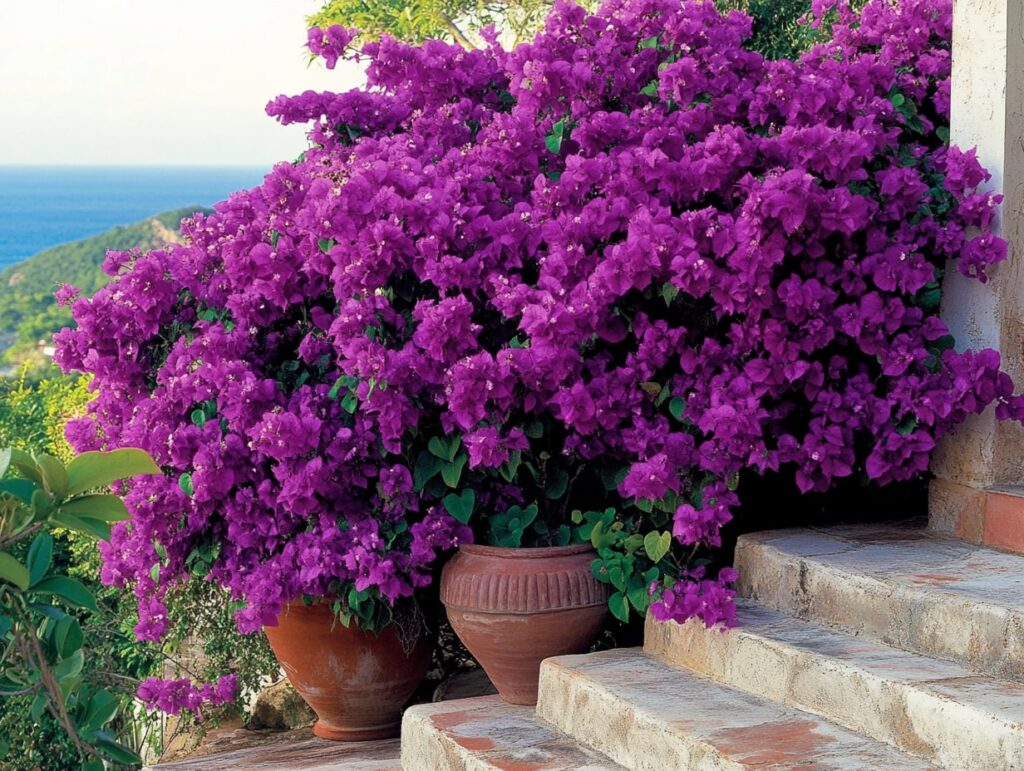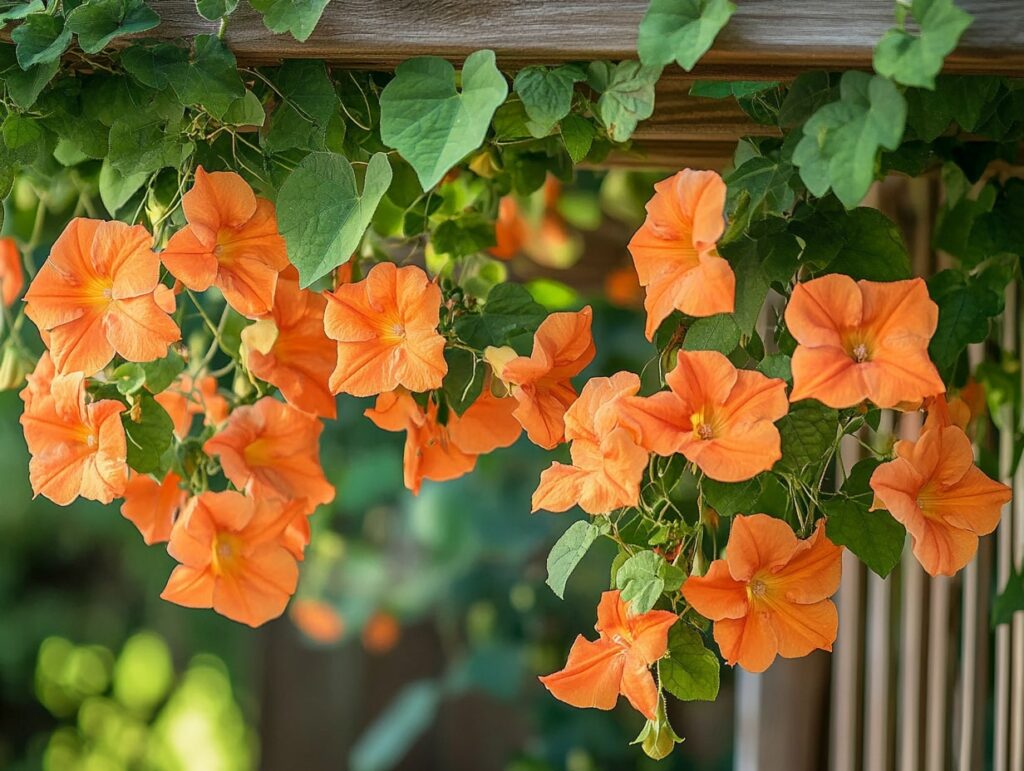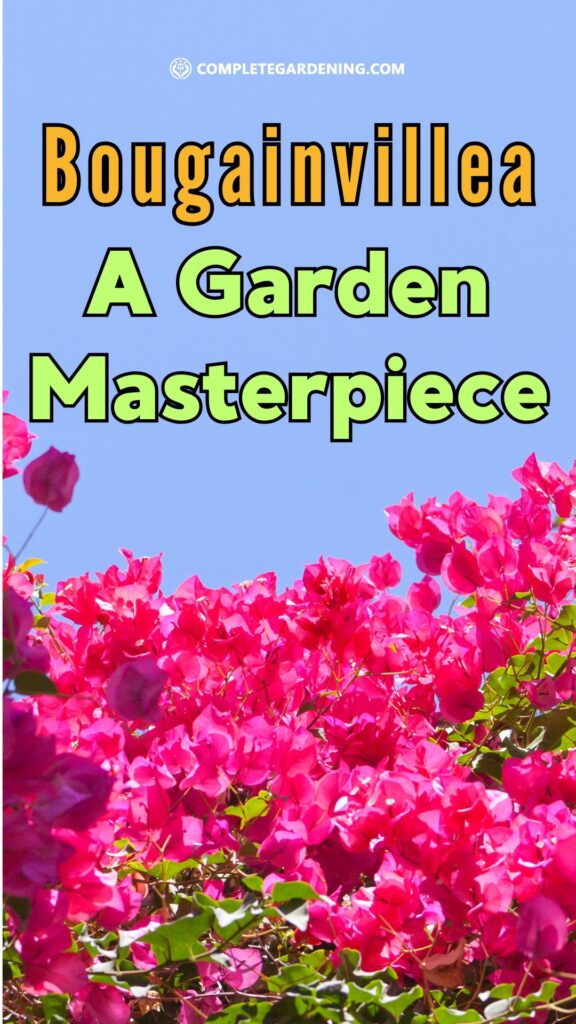Picture yourself in a tropical paradise, where every corner bursts with a riot of color and the air is alive with the scent of exotic blooms. Amidst this vibrant scene, one plant reigns supreme: bougainvillea.
Known for its breathtaking beauty and hardy nature, this tropical vine captures the hearts of gardeners around the world. Originating from the lush landscapes of South America, bougainvillea has the power to transform any garden into a vibrant, colorful sanctuary.
Ready to bring a touch of the tropics to your own backyard? Let’s explore the secrets to growing and caring for this stunning plant, ensuring it thrives and adds a splash of exotic charm to your space.
Understanding Bougainvillea
Bougainvillea (botanical name: Bougainvillea), commonly seen in shades of neon pink, peach, red, and white, is not actually flowering when you see its colors. Those brilliant hues are from modified leaves called bracts, which surround the plant’s small, less noticeable flowers.
This evergreen perennial thrives in USDA Hardiness Zones 9 to 11 but can also be grown as an annual or a potted plant in colder climates.
Planting Bougainvillea
Sunlight Requirements
Bougainvillea requires full sun, meaning at least six hours of direct sunlight daily. Planting in a shaded area will result in a lot of green growth but fewer flowers, defeating the purpose of having this vibrant plant in your garden.
Soil and Watering Needs
Bougainvillea prefers well-drained, slightly acidic soil. It is crucial to plant it in soil that doesn’t retain too much moisture, as this can lead to root rot.
When planting, water deeply and regularly until the plant is established. After that, bougainvillea is quite drought-tolerant and prefers to dry out between waterings.
Growing Bougainvillea in Pots
For those in colder climates or with limited space, growing bougainvillea in pots is a great option. Choose a pot with good drainage and use a well-draining potting mix, ideally one designed for cacti or palms.
Regularly check the soil moisture, especially in hot weather, and ensure the plant is placed in full sunlight.
Care and Maintenance
Pruning
Regular pruning is essential to maintain the shape and size of your bougainvillea. Prune during the growing season to encourage new growth and more blooms. Remove dead or diseased branches and trim the tips to promote a bushier appearance.
Fertilizing
While bougainvillea does not require frequent fertilization, a balanced slow-release fertilizer can support healthy growth. Avoid high-nitrogen fertilizers as they promote leaf growth over blooms.
For potted plants, a water-soluble fertilizer can be applied at half strength during the blooming season.
Training and Support
Bougainvillea vines can grow quite tall and heavy, so they need support. Use strong ties to train the vines onto trellises, arbors, or fences. This not only helps manage the plant’s growth but also enhances the visual appeal of your garden.
Pest and Disease Management
Bougainvillea is relatively pest-resistant but can occasionally suffer from aphids, mealybugs, and spider mites. Use a gentle blast of water to remove aphids and apply horticultural oil or insecticidal soap for mealybugs.
Regular inspection and early intervention can prevent these pests from becoming a significant problem.
Winter Care for Bougainvillea
In colder climates, bougainvillea needs special care to survive the winter. Before the first frost, move potted plants indoors to a bright, sunny location. Reduce watering and avoid fertilizing during the winter months.
If planted outdoors, cover the plant with a frost cloth during cold snaps.
Creating a Stunning Display
Bougainvillea is versatile and can be used in various ways to enhance your garden’s aesthetic. Here are some ideas:
- Climbing Walls: Train bougainvillea to climb up walls or fences for a striking vertical display.
- Arbors and Trellises: Use arbors and trellises to create beautiful garden entrances or focal points.
- Hanging Baskets: Bougainvillea can also be grown in hanging baskets, allowing the colorful bracts to cascade downwards.
- Ground Cover: In sunny areas, bougainvillea can serve as a vibrant ground cover, adding color to your landscape.
Popular Bougainvillea Varieties
Barbara Karst
Description: ‘Barbara Karst’ is one of the most popular and vigorous bougainvillea varieties, known for its large clusters of magenta blooms. This variety can climb up to 40 feet with proper support, making it ideal for creating dramatic vertical displays.
Best Uses:
- Climbing walls and fences
- Covering arbors and trellises
- Creating vibrant privacy screens
Growing Tips:
- Ensure it gets plenty of sunlight (at least six hours a day).
- Plant in well-draining soil and water deeply but infrequently.
- Prune regularly to manage its vigorous growth.
California Gold
Description: ‘California Gold’ is renowned for its bright yellow bracts, which add a sunny glow to any garden. This variety can climb up to 30 feet, making it a fantastic choice for those looking to add a burst of color.
Best Uses:
- Adding bright accents to garden walls
- Enhancing garden entrances with arbors
- Creating a stunning backdrop for other plants
Growing Tips:
- Plant in full sun to ensure the brightest color display.
- Water sparingly once established to prevent root rot.
- Use a balanced fertilizer during the growing season to support vigorous growth.
James Walker
Description: ‘James Walker’ features stunning red-purple blooms and is known for its year-round flowering in frost-free zones. This variety can grow up to 30 feet, making it a versatile option for various garden uses.
Best Uses:
- Creating colorful garden borders
- Climbing trellises and pergolas
- Enhancing outdoor living spaces with vibrant color
Growing Tips:
- Provide ample sunlight and well-draining soil.
- Prune regularly to promote continuous blooming.
- Use a bougainvillea-specific fertilizer to enhance flower production.
Moneth or Purple Queen
Description: ‘Moneth,’ also known as Purple Queen, boasts deep purple bracts that add a regal touch to any garden. It can grow up to 15 feet tall when supported or act as a dense ground cover.
Best Uses:
- Covering slopes and hillsides
- Adding color to large pots and containers
- Creating a striking contrast with lighter-colored plants
Growing Tips:
- Ensure it receives full sun for optimal flowering.
- Water regularly during the establishment period, then reduce frequency.
- Prune to maintain desired shape and encourage bushier growth.
Sundown Orange
Description: ‘Sundown Orange’ is known for its dynamic color change, with bracts that start deep orange, mature to salmon, and fade to coral. This variety can climb up to 20 feet and withstands high heat, making it perfect for warm climates.
Best Uses:
- Adding dynamic color to trellises and fences
- Enhancing Mediterranean-style gardens
- Creating a warm, inviting atmosphere in outdoor spaces
Growing Tips:
- Plant in a sunny location to maximize color intensity.
- Use well-draining soil to prevent waterlogging.
- Prune after each bloom cycle to encourage continuous flowering.
Bougainvillea FAQs
What is the best climate for growing bougainvillea?
- Answer: Bougainvillea thrives in warm, sunny climates with temperatures above 60°F (15°C). It prefers tropical and subtropical regions but can also be grown in cooler climates if protected from frost.
How often should I water my bougainvillea?
- Answer: Bougainvillea prefers dry conditions and does not like to be overwatered. Water deeply but infrequently, allowing the soil to dry out between watering. In the growing season, water about once a week, reducing frequency during cooler months.
What type of soil is best for bougainvillea?
- Answer: Bougainvillea grows best in well-draining soil with a slightly acidic to neutral pH (5.5 to 7.0). A mix of garden soil, sand, and organic compost works well to ensure proper drainage and nutrient availability.
How can I encourage my bougainvillea to bloom more?
Answer: To encourage more blooms, ensure your bougainvillea gets plenty of sunlight (at least 5-6 hours a day).
Pruning after a blooming cycle can also promote new growth and more flowers. Additionally, using a balanced, slow-release fertilizer during the growing season can help.
What should I do if my bougainvillea’s leaves are turning yellow?
Answer: Yellow leaves can be a sign of overwatering, poor drainage, or nutrient deficiencies. Check the soil moisture and drainage first.
Ensure the plant is not sitting in water and adjust watering accordingly. If drainage is not an issue, consider a balanced fertilizer to address potential nutrient deficiencies.
Bougainvillea is a resilient and vibrant addition to any garden, offering a splash of color and a touch of tropical charm. With the right care and maintenance, you can enjoy the stunning beauty of this plant almost year-round.
Whether climbing up a trellis, cascading from a hanging basket, or covering a sunny hillside, bougainvillea is sure to make your garden the envy of the neighborhood.
